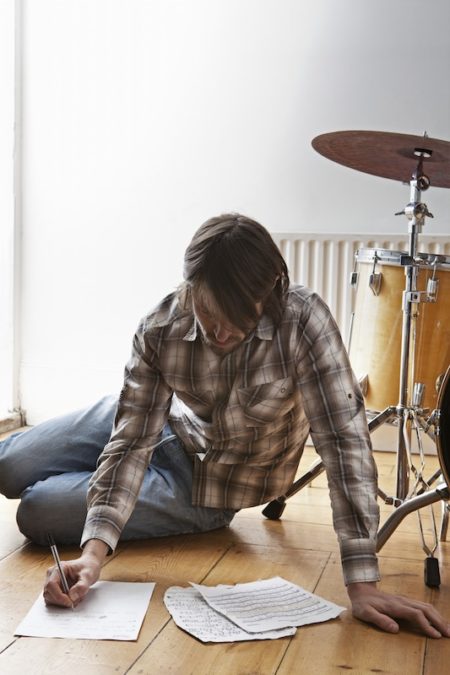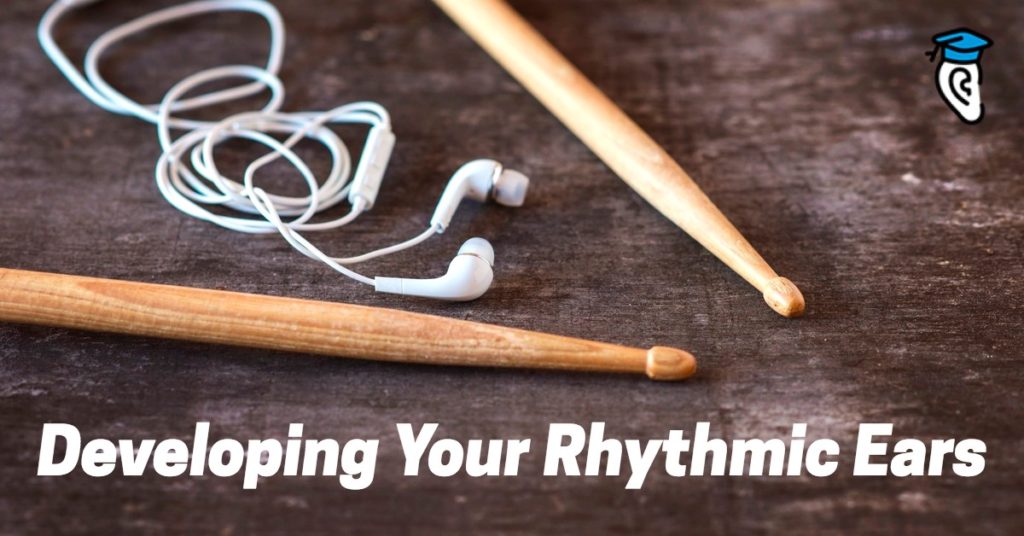All music consists of three main elements (in varying proportions): Melody, Harmony and Rhythm. As we build our understandings of these basic structures, extracting musical ideas from our creative mind becomes a directed process rather than random guesswork.
This time we decided to take peek into the world of rhythm. Rhythm is the gas in the music engine that makes your body move and your head nod. It makes you want to twerk, mosh, and all the other crazy things you do when you feel that backbeat nice and solid. As a musician, it’s crucial for you to have a firm understanding of the basics behind the concepts of rhythm. The purpose of our article is to provide insights on how to keep track of time in any given record. We’ll also listen to some songs that explore rhythm in many different ways. from easy to advanced.
First we’ll touch on some basic learning techniques, then we’ll see how wild some artists get when exploring rhythm!
Benefits of Understanding the Theory Behind the Rhythm
It’s worth taking your time to learn the essentials behind the most common time signatures, as well as any other concepts necessary to get you going (musical notation, note values, bars, song structure). There are several benefits in this:
- If you’re a musician playing any instrument you’ll have an easier time playing with others and staying in the pocket (playing in time).
- If you are a producer, you’ll know where to put notes in the sequencer or in the piano roll in your DAW (Digital Audio Workstation).
- If you’re a singer, next time you get in the studio to record vocals and your producer says something like “your verse starts on the ‘and’ of three,” you’ll actually know just what he’s talking about.
 You will gain tremendous flexibility in your rhythmic expression and understanding by listening to and transcribing various rhythmic patterns.Transcription is the process of putting down what you hear on paper (sheet music).Transcription is a very common practice among jazz and classical musicians and can immensely increase your ear’s abilities, especially if you’re doing this for a complex piece of music. . Grab your favourite solo and write down the actual notes and rhythms that being played. At first it’s going to be quite difficult! But keep doing it: you will surprise yourself at how quickly you improve! Soon you will recognize recurring patterns and how these patterns build on each other. The return on your investment will be a vastly improved perception of rhythm.
You will gain tremendous flexibility in your rhythmic expression and understanding by listening to and transcribing various rhythmic patterns.Transcription is the process of putting down what you hear on paper (sheet music).Transcription is a very common practice among jazz and classical musicians and can immensely increase your ear’s abilities, especially if you’re doing this for a complex piece of music. . Grab your favourite solo and write down the actual notes and rhythms that being played. At first it’s going to be quite difficult! But keep doing it: you will surprise yourself at how quickly you improve! Soon you will recognize recurring patterns and how these patterns build on each other. The return on your investment will be a vastly improved perception of rhythm.
The best way to understand rhythm is to practice note values with a metronome. Try singing them out loud or play them on your instrument. Another great way to really improve your pocket in 4/4 time is to set your metronome to play on beats 2 and 4 of bar. This way you’ll have to keep the 1 and 3 in your mind. Try it and you’ll see just how bouncy it gets.
Frequently Used Time Signatures
Most popular music nowadays is surprisingly limited in its use of time signatures. So learning the ins and outs of these two will cover a whole lot of ground!
Common Time
If you’re trying to get into anything that is being played on the radio, chances are you are going to be mainly dealing with common time. Also known as 4/4, this time signature means that there are four beats in each measure, and that the quarter note symbolizes one beat.
Here’s an amazing example of a song in common time. Nothing is as 4-on-the-floor as house music. This record by Hannah Wants & Chris Lorenzo has a very tight and bouncy groove lead by a solid kick drum on every beat and hi-hats on the upbeats (1 & 3).
To listen to the beat jump to [1:06] of the song. Pay attention how intuitive the record is: you can easily flow with the song and get funky with it. So what’s happening here rhythmically?
The bass utilizes common dotted eighth note patterns [1:08], with occasional 16th notes runs to link musical sections. See if you can recognize those by ear. Tapping the quarter notes out and listening closely to various patterns will help you get a clearer picture.
Perhaps 99.9% of records on the radio are in common time. As a listener you can anticipate where the song goes without having any knowledge of the music theory at all. What do we listen for in songs like these? Try counting the bars and you will see how everything progresses in equal divisions. Every eight bars something new happens, whether sounds are added or subtracted from the mix.
6/8
The 6/8 time signature is especially common in blues, jazz and classic rock. But some creatives are moving 6/8 beyond those traditions. Check this amazing track by the Los Angeles crew Vindata, ft. Chuck Ellis on the vocals.
There’s a healthy dose of rhythmical variety present in this song, that includes eighth notes, eighth note triplets, and sixteenth notes in the fills. See if you can identify which one is which.
It is so refreshing to hear electronic artists using 6/8. The beat comes in on [0:19], try counting “1, 2, 3, 4!, 5, 6” to get an idea of what’s going on. Do you hear how the kick hits on every 1 of the bar and then snare cuts the bar in half on 4? As in the previous example eighth note patterns are dominant here. But occasional 16th note fills occur as well. Listen at [2:08] to the snare drum’s trill-like fill.
The waltzy tempo of this song makes the overall feel rather swingy, yet very intuitive to follow. What a song!
Rhythm Gets Complex
So does it mean that whenever we are in 4/4 or other frequently used time signatures we will never lose the beat? If we are talking radio format then you should be good, but there are multiple genres that really wanna mess around with you. These would primarily include: jazz, math rock, classical music and various ethnic musics (especially Carnatic and Hindustani music). Some people simply wanna see the world burn!
Let’s listen to a few examples to shake you around a bit.
Jazz: “You & the Night & the Music”
Here’s an outstanding performance of a famous jazz standard “You & the Night & the Music” played by the Keith Jarrett Trio. At a crazy 280 BPM (beats per minute!) this is a – ahem – difficult piece to pull off.
Consider that you have to keep perfect time, follow the fast changing chords, improvise, and interact with your band-members. To keep yourself from getting lost in the tempest, listen to the upright bass player (Gary Peacock in this video) and the drummer (Jack DeJohnette). Those two instruments usually provide a solid back beat for the soloist, but also can go in and out. Go to [7:22] to hear the musicians “trading eights”. This is a common technique in jazz performance in which musicians take turns and improvise for eight bars each. (You can also trade sixteens and fours.)
There’s a whole lot of rhythm going on here: everything from whole notes to whole note triplets, triplets, all sorts of dotted values and so on. Perhaps, try transcribing a small section of this one and see how well are you able to internalize which rhythmical values are performed.
Slower tempos can give you better insight into the world of rhythm: there’s more room for variety and it’s easier to grab how different rhythmic values interact with the beat. So find an app that will slow down the tempo for you to aid in your transcription.
Jazz musicians really love to display their virtuosity, dive into crazy polyrhythmic ideas, utilize unheard harmonies and all sorts of concepts known and not known to humanity!
Hindustani, Carnatic, and Jazz Fusion: “Ma No Pa”
The most advanced musicians on our planet live in India. Hindustani (North Indian) and Carnatic (South Indian) schools have six thousand years of tradition and “speak” in advanced musical languages. They even created an independent language to study rhythm which is called Konnakol. This is a whole different world, and if you want to really expand your rhythmic concept, I recommend you do some research online. It’s very logical and mathematically based, yet Konnakol can open so many doors into advanced rhythm concepts – it gets really crazy in there!
Here’s a performance of a musical piece that starts in 4/4 and is later taken to unbelievable places. “Ma No Pa” is composed by percussionist Zakir Hussain, and performed here by Hussain and John McLaughlin – a famous jazz musician, known for his particular passion for Indian music. To be well-rounded in this type of music requires years and years of preparation. To train your ear and sense of rhythm, try counting the bars as the musicians play. It is particularly difficult because there isn’t a bass instrument or a drum groove that plays a recognizable pattern. Analyzing such a piece from rhythmical standpoint is unbelievably difficult, especially without knowing Konnakol as it includes complex rhythmical values, poly-rhythms and rhythmical extrapolations that mathematically add up after several bars, so you have to look the bigger picture beyond the bar.
Odd Man Out: Math Rock and “Weird Circles”
Here’s an example of a math rock tune. Math rock is a popular genre in rock music that is all about musicians experimenting with odd time signatures.
“Weird Circles” by Tera Melos is in 5/4. It features subtle guitar picking before exploding into a massive wall of sound played by the full band. How do you find your way in such music? Some people rely on counting 5/4 in their head (can be also counted as alternating measures of three and two), others rely on the inner feel. There isn’t a right or wrong way: we would say that combining both the feel and the count approach will bring the best results!
Analyzing rhythm in this record you’ll hear primarily eighth and sixteenth note subdivisions; sixteenth notes courtesy of raucous drum fills and guitar trills. If you’re playing an instrument, grab a metronome and try playing scales using the following pattern: start with quarter notes, then follow with eighth notes, triplets, sixteenth, and so on as fast as you can.
As you can see the world of rhythm is diverse and is worth exploring in full! Regardless of your genre it is always a good idea to try and learn a bit more. As an artist you want to be a professional, and professionals know their craft really well. Take it a step at a time and progress gradually through your rhythm training. As you hone your sense of rhythm, you will more and more feel the joy of playing and singing in the pocket!







